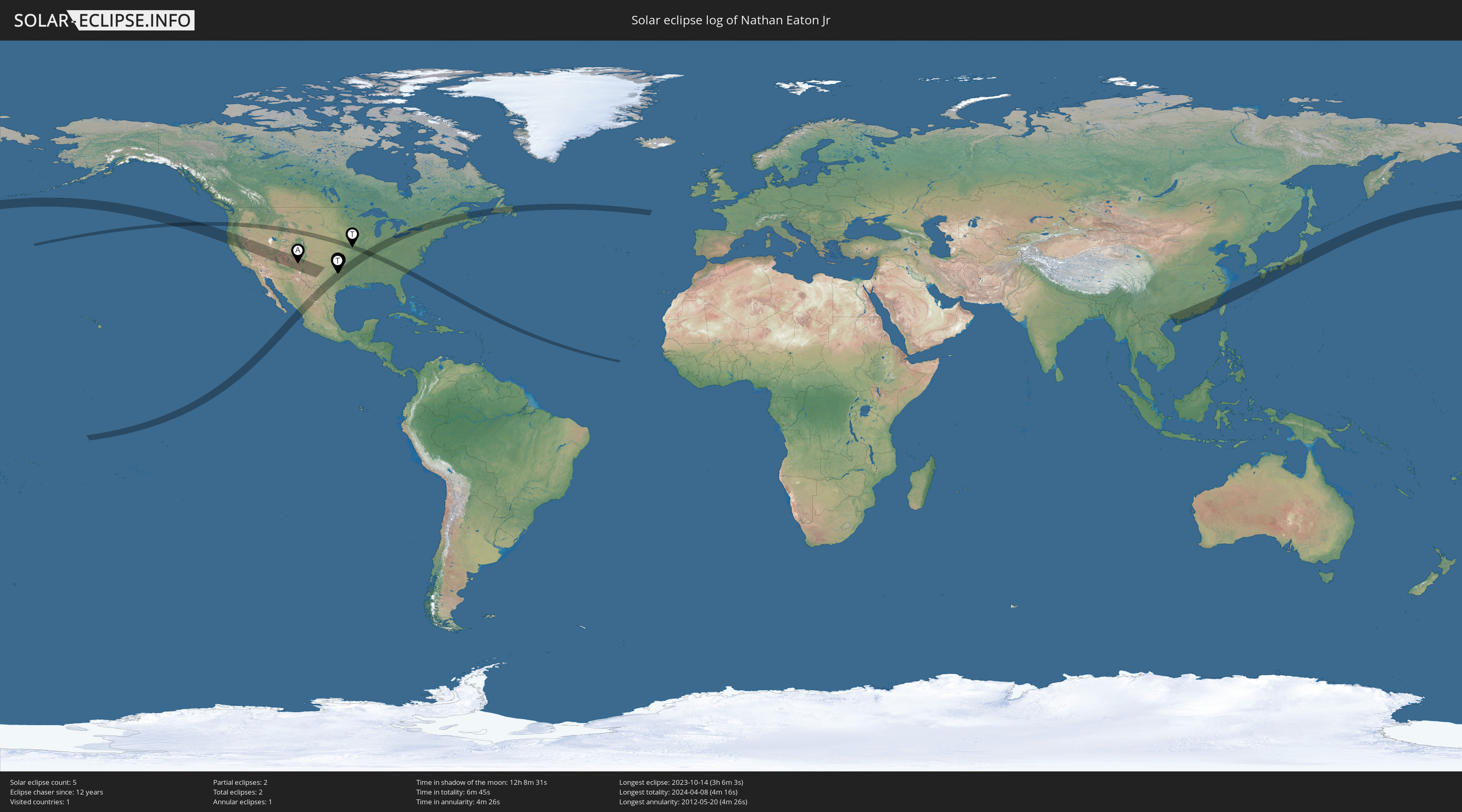Although we had to travel to see the Great American Eclipse in 2017 - the first and only total eclipse I have seen so far - this time the eclipse is coming to us. In fact, we could just step outside in our back yard in East Dallas and enjoy almost 4 minutes of totality. However, we have family a little south of here who live closer to the centerline and will get 4 minutes and 16 seconds of totality so our plan is to spend the day with family enjoying the view. As long as the weather cooperates, of course!
This time I hope to both see totality as well as capture the experience through many other means. The primary goal is to capture the full eclipse, start to finish, through our small telescope, shooting with a solar filters for most of the eclipse and removing it only for those few minutes where the Moon has fully eclipsed the Sun.
The list of other ways I plan to capture the eclipse isn't final and I am sure I'll have to give up on some of my plans but right now, in addition to the telescopic images, my tentative plans include:
- a wide angle time lapse of the eclipse from beginning to end with our son's family chicken coop in the foreground
- a long-exposure shot on film with a Brownie camera (a family heirloom) outfitted with a pinhole lens
- the family being able to view the sun, sunspots and eclipse through a solar funnel attached to our other small telescope
- video of shadow bands on a white sheet
- aerial video captured with a drone of the lunar umbra moving across the landscape
- data collection before, during and after the eclipse using a variety of home made digital sensors based on a low-cost microprocessor called an ESP32, collecting information on the environment (temperature, humidity, pressure), sound levels, light levels and light color spectrum
Stay tuned for more updates on my progress getting all this ready to go!






















No comments:
Post a Comment